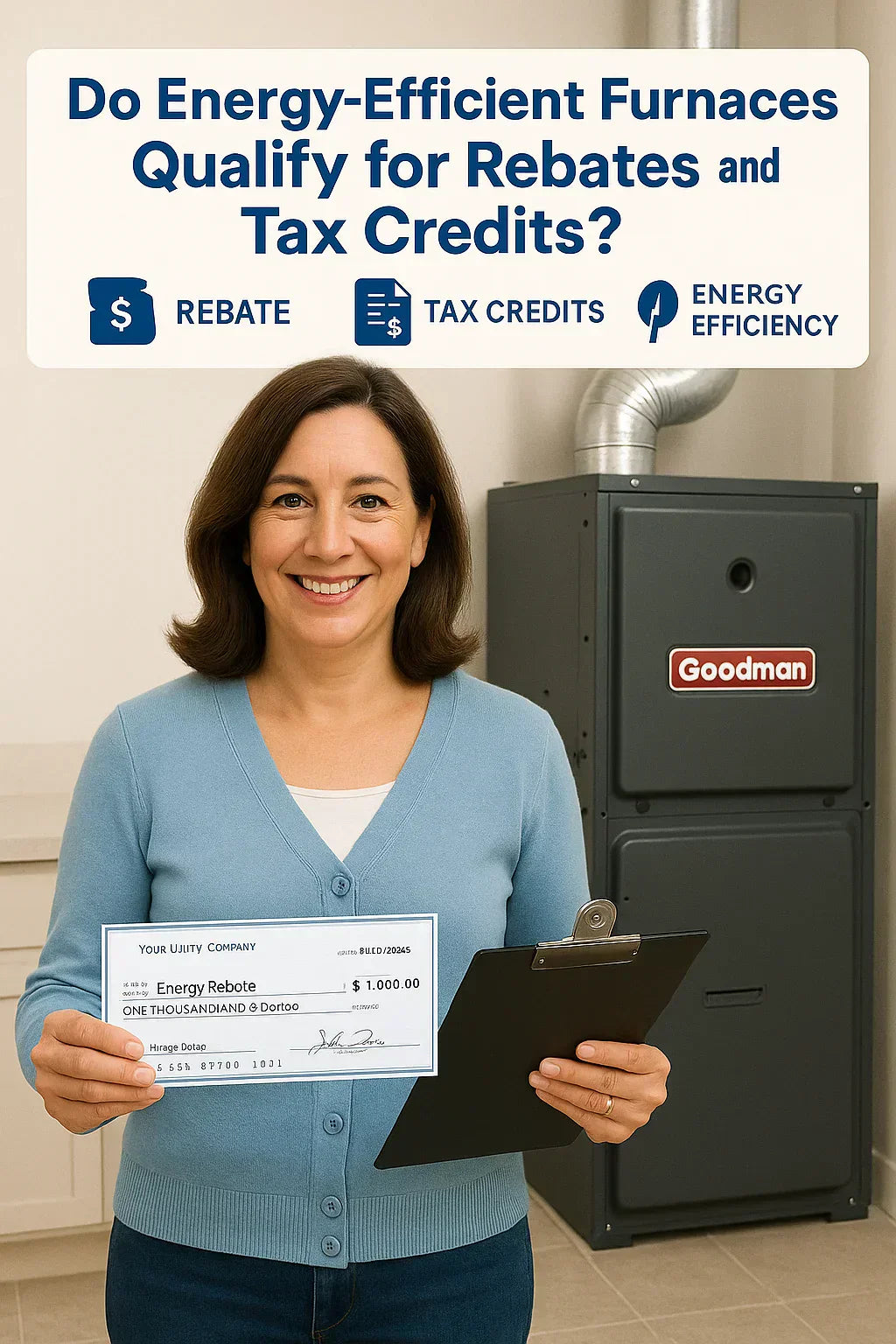🏡 Why It Matters
For Samantha Reyes and homeowners aiming to upgrade efficiently, understanding rebates and tax credits can significantly reduce the upfront cost of installing an electric furnace while aligning with your energy goals.
💡 What Are Energy Rebates and Tax Credits?
-
Rebates: Instant or post-installation refunds provided by utilities or states for energy-efficient purchases.
-
Tax Credits: Reduce your tax liability when you file federal or state taxes for qualifying energy-efficient upgrades.
These incentives encourage homeowners to adopt efficient, low-emission heating solutions.
✅ Do Electric Furnaces Qualify?
In most cases, electric furnaces themselves do not qualify for federal tax credits because they are not classified under the highest efficiency categories like heat pumps or advanced gas systems.
However, you may still find state and utility rebates for:
-
High-efficiency electric furnaces meeting specific energy efficiency thresholds.
-
Electrification incentives replacing fossil-fuel systems with electric heating.
-
Whole-home efficiency upgrade rebates.
Check local programs through DSIRE, a national database of incentives and rebates.
🛠️ What Qualifies for Federal Tax Credits?
Under the Inflation Reduction Act (IRA), credits are more focused on: ✅ Heat pumps
✅ Advanced energy property (smart thermostats, certain panels)
✅ Home weatherization improvements
If considering a heat pump instead of an electric furnace, see the DOE Heat Pump Guide for potential tax credit details.
🌎 State and Utility Incentives
Some states and local utilities offer:
-
Rebates ($100–$800) for high-efficiency electric furnace installations.
-
Incentives for switching from propane/oil to electric heating.
-
Whole-home rebates for duct sealing and insulation upgrades tied to your furnace installation.
Examples:
✅ California: Electrification rebates through local utilities.
✅ New York: NYSERDA electrification and efficiency rebates.
✅ Washington: Utility electrification incentives for electric heating upgrades.
📋 How to Check If You Qualify
✅ Contact your local utility provider for current rebate programs.
✅ Visit DSIRE for state-specific rebates.
✅ Speak with your HVAC contractor about programs in your region.
✅ Check your state’s energy office for electrification incentives.
💡 Additional Ways to Save
Even if your electric furnace doesn’t qualify for a federal credit, you can reduce energy costs by:
✅ Sealing ducts and upgrading insulation.
✅ Installing a smart thermostat.
✅ Using off-peak rates if your utility offers them.
🪙 How Much Can You Save?
-
Utility rebates: $100–$800 per system.
-
Duct sealing/insulation rebates: $300–$1,500.
-
Potential heat pump switch incentives: Up to $2,000 in federal credits.
📈 Long-Term Benefits of Electrification
✅ Lower maintenance than combustion systems.
✅ Can pair with solar to offset electric heating costs.
✅ Avoids fuel price fluctuations.
✅ Supports a cleaner energy grid.
🔗 Next Steps
-
Explore electric furnace models at The Furnace Outlet.
-
Contact your utility provider about current rebates for electric heating upgrades.
-
Consult with your contractor on efficiency improvements to bundle with your furnace installation.
While electric furnaces themselves may not always qualify for federal tax credits, combining state and utility rebates, insulation upgrades, and strategic planning can significantly reduce your upfront and ongoing heating costs.
In the next topic we will read more about: How Many Gallons Do You Really Need? Choosing the Right Electric Furnace Size for Your Home







